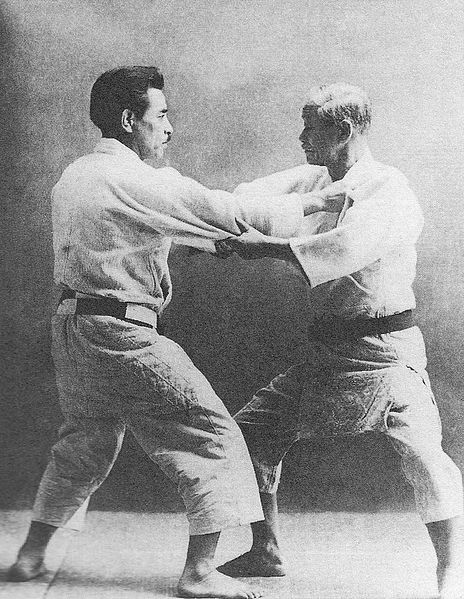Kanō Jigorō was a Japanese educator, athlete, and the founder of judo. Along with ju-jutsu, judo was one of the first Japanese martial arts to gain widespread international recognition, and the first to become an official Olympic sport. Pedagogical innovations attributed to Kanō include the use of black and white belts, and the introduction of dan ranking to show the relative ranking among members of a martial art style. Well-known mottoes attributed to Kanō include "maximum efficiency minimal effort" and "mutual welfare and benefit" .
Kanō Jigorō
Kanō as a child (right)
Kanō demonstrated jūjutsu for Ulysses S. Grant when the former U.S. president visited Japan in 1879.
Menkyo certificate issued by Iikubo to Kanō, October 1883. The term Jūdō (柔道), which had already been in use within Kitō-ryū, appears in the first (rightmost) column.
Judo is an unarmed modern Japanese martial art, combat sport, Olympic sport, and the most prominent form of jacket wrestling competed internationally. Judo was created in 1882 by Kanō Jigorō as an eclectic martial art, distinguishing itself from its predecessors due to an emphasis on "randori" instead of "kata" alongside its removal of striking and weapon training elements. Judo rose to prominence for its dominance over established jujutsu schools in tournaments hosted by the Tokyo Metropolitan Police Department, resulting in its adoption as the department's primary martial art. A judo practitioner is called a "judoka" , and the judo uniform is called "judogi" .
Kyuzo Mifune (left) and Kanō Jigorō (right)
Takamasa Anai takes down his opponent during the Grand Slam Tokyo.
Jigoro Kano, founder of judo
Eisho-ji temple, Tokyo








